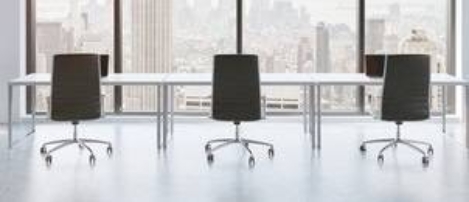August 10, 2016
Low take up for shared parental leave raises questions over demand 0
 New research questions how much demand exists in the UK for fathers to take shared parental leave. The first available figures reveals a low take-up of new rights to paid leave, as just 3,000 new parents took advantage of the system in the first three months of 2016 – one year on from its introduction. By contrast, approximately 52,000 fathers and 155,000 mothers took paternity and maternity leave in an equivalent time period in 2013/14. The figures were published as a result of a freedom of information request from law firm EMW who suggest that this shows that the new rules are being significantly under-utilised and policymakers need to give more consideration to what benefits future changes to employment law will actually deliver versus the impact on small businesses which have to implement them. The new Shared Parental Leave system allows parents to share paid time off between them, in place of (and at the same rate as) Statutory Maternity Pay.
New research questions how much demand exists in the UK for fathers to take shared parental leave. The first available figures reveals a low take-up of new rights to paid leave, as just 3,000 new parents took advantage of the system in the first three months of 2016 – one year on from its introduction. By contrast, approximately 52,000 fathers and 155,000 mothers took paternity and maternity leave in an equivalent time period in 2013/14. The figures were published as a result of a freedom of information request from law firm EMW who suggest that this shows that the new rules are being significantly under-utilised and policymakers need to give more consideration to what benefits future changes to employment law will actually deliver versus the impact on small businesses which have to implement them. The new Shared Parental Leave system allows parents to share paid time off between them, in place of (and at the same rate as) Statutory Maternity Pay.







 A new report from the United Nations claims to identify the world’s leading nations in the use of the Internet to support sustainable development. The
A new report from the United Nations claims to identify the world’s leading nations in the use of the Internet to support sustainable development. The 
 It is no longer a question of whether one of the world’s major economies will introduce a universal basic income for all of its citizens, but when. Over the weekend, the leader of the UK’s Labour Party Jeremy Corbyn announced in
It is no longer a question of whether one of the world’s major economies will introduce a universal basic income for all of its citizens, but when. Over the weekend, the leader of the UK’s Labour Party Jeremy Corbyn announced in 
 Small business owners are working thirteen hours a week more than the UK average, negatively impacting the health of nearly a third (28 percent) of them, according to a survey commissioned by business marketplace Bizdaq. According to
Small business owners are working thirteen hours a week more than the UK average, negatively impacting the health of nearly a third (28 percent) of them, according to a survey commissioned by business marketplace Bizdaq. According to 
 We’re operating in an increasingly tech-centric environment, but human talent still remains one of the core differentiators if a business is to thrive. Not surprisingly, the mission to get the very best people on board and optimise the potential of those already in situ has become the Holy Grail for many companies, irrespective of scale and sector – a challenge that demands a more intuitive and precise, even scientific approach to human capital management. Data analytics is a case in point, designed to extrapolate insight from intelligence across a variety of disparate sources and establish actionable intelligence, capabilities which naturally lend themselves to powering key decisions around hiring and retention and building on existing talent. Yet despite the proliferation of analytics across many strands of the workplace, take up in the HR sphere remains relatively modest, in tandem with a long-held reticence over the use of the technology in this area.
We’re operating in an increasingly tech-centric environment, but human talent still remains one of the core differentiators if a business is to thrive. Not surprisingly, the mission to get the very best people on board and optimise the potential of those already in situ has become the Holy Grail for many companies, irrespective of scale and sector – a challenge that demands a more intuitive and precise, even scientific approach to human capital management. Data analytics is a case in point, designed to extrapolate insight from intelligence across a variety of disparate sources and establish actionable intelligence, capabilities which naturally lend themselves to powering key decisions around hiring and retention and building on existing talent. Yet despite the proliferation of analytics across many strands of the workplace, take up in the HR sphere remains relatively modest, in tandem with a long-held reticence over the use of the technology in this area.


 The corporate real estate profession will be influenced, disrupted and transformed in the years ahead by a powerful combination of forces that are re-shaping business strategy and operations, consumer preferences, and how and where people want to live and work, according to a new report from CoreNet Global.
The corporate real estate profession will be influenced, disrupted and transformed in the years ahead by a powerful combination of forces that are re-shaping business strategy and operations, consumer preferences, and how and where people want to live and work, according to a new report from CoreNet Global. 
 The UK commercial property sector is now larger than at any time since before the last recession, claims a new analysis from the Investment Property Forum. It has risen nearly 50 percent since its lowest point in 2009 and is now valued at £871 billion, an increase of around 11 percent. The amount of stock actually shrank last year, according to the study, with the increase in overall value arising from price rises. The previous highest valuation the IPF puts on the market was £865 billion in 2006. All is not good news however as a second report from the same organisation which explores sentiment in the market following the Brexit vote confirms there is a great deal of uncertainty in the market. This is particularly acute in the London market which makes up over a third of the nation’s total and is increasingly dominated by foreign owners who may have a negative response to the UK’s vote to leave the EU. Intriguingly, the report found that total floorspace marginally declined over 2015 and has only increased by 0.9 percent since the market high of 2006.
The UK commercial property sector is now larger than at any time since before the last recession, claims a new analysis from the Investment Property Forum. It has risen nearly 50 percent since its lowest point in 2009 and is now valued at £871 billion, an increase of around 11 percent. The amount of stock actually shrank last year, according to the study, with the increase in overall value arising from price rises. The previous highest valuation the IPF puts on the market was £865 billion in 2006. All is not good news however as a second report from the same organisation which explores sentiment in the market following the Brexit vote confirms there is a great deal of uncertainty in the market. This is particularly acute in the London market which makes up over a third of the nation’s total and is increasingly dominated by foreign owners who may have a negative response to the UK’s vote to leave the EU. Intriguingly, the report found that total floorspace marginally declined over 2015 and has only increased by 0.9 percent since the market high of 2006.


 Fifteen million UK internet users have undertaken a ‘digital detox’ in a bid to strike a healthier balance between technology and life beyond the screen, according to a new Ofcom study. The study of around 2,500 people suggests that our reliance on the internet is affecting people’s personal and working lives, leading many to seek time away from the web to spend time with friends and family. Ofcom’s
Fifteen million UK internet users have undertaken a ‘digital detox’ in a bid to strike a healthier balance between technology and life beyond the screen, according to a new Ofcom study. The study of around 2,500 people suggests that our reliance on the internet is affecting people’s personal and working lives, leading many to seek time away from the web to spend time with friends and family. Ofcom’s 









August 9, 2016
Time to address ‘shocking disconnect’ between boardroom and staff pay 0
by Sara Bean • Comment, News, Workplace
(more…)